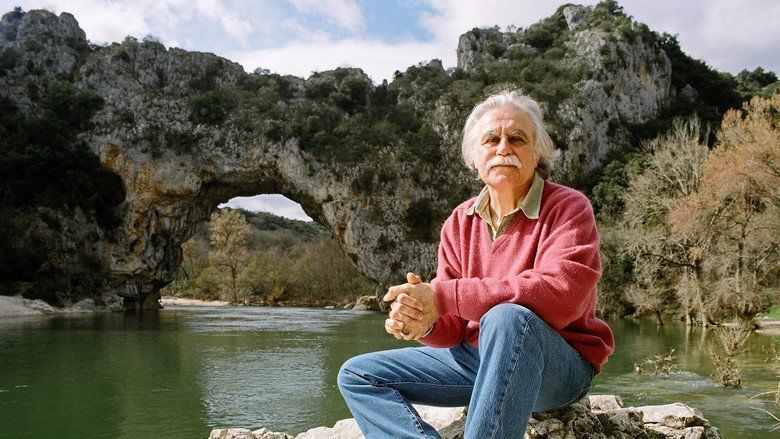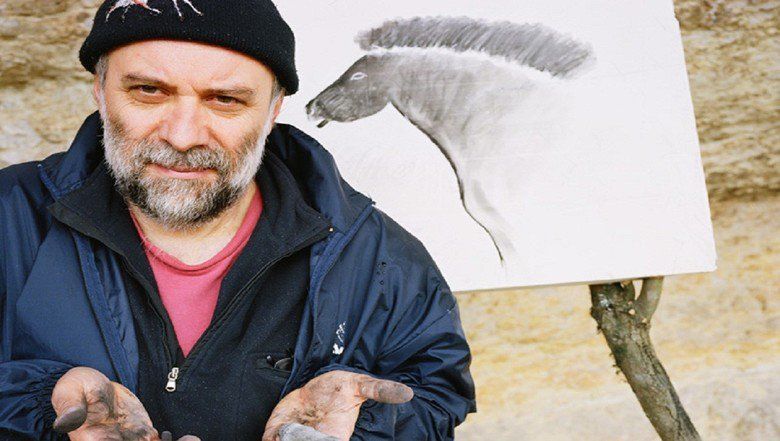Cave of Forgotten Dreams
8.6 /10 1 Votes8.6
96% Rotten Tomatoes Initial DVD release March 1, 2012 (France) Duration Country CanadaUnited StatesFranceGermanyUnited Kingdom | 7.4/10 IMDb 86% Metacritic Genre Documentary, History Language English | |||||||||||||||||||||||||||||||||
 | ||||||||||||||||||||||||||||||||||
Release date 13 September 2010 (2010-09-13) (TIFF)25 March 2011 (2011-03-25) (United Kingdom)29 April 2011 (2011-04-29) (United States) Initial release March 25, 2011 (Republic of Ireland) Cast Werner Herzog (Himself), Dominique Baffier (Herself), Jean Clottes (Himself), Jean-Michel Geneste (Himself)Similar movies The Hunger Games: Catching Fire , Mission: Impossible III , G.I. Joe: The Rise of Cobra , Heavenly Creatures , Sliver , Monolith | ||||||||||||||||||||||||||||||||||
Cave of forgotten dreams official trailer 1 2010 hd
Cave of Forgotten Dreams is a 2010 3D documentary film by Werner Herzog about the Chauvet Cave in southern France, which contains the oldest human-painted images yet discovered. Some of them were crafted around 32,000 years ago. The film premiered at the 2010 Toronto International Film Festival and consists of images from inside the cave as well as of interviews with various scientists and historians. The film also includes footage of the nearby Pont d'Arc natural bridge.
Contents
- Cave of forgotten dreams official trailer 1 2010 hd
- Cave of forgotten dreams 2011 official trailer hd
- Production
- Release
- Reception
- References

Cave of forgotten dreams 2011 official trailer hd
Production

Herzog's interest in the Chauvet cave was prompted by Judith Thurman's New Yorker article "First Impressions". Thurman is listed as one of the co-producers of the film.

The cave is carefully preserved and the general public is not allowed to enter. Herzog received special permission from the French Minister of Culture to film inside the cave. Having received permission, Herzog nonetheless had to film under heavy restrictions. All people authorized to enter must wear special suits and shoes that have had no contact with the exterior. Also, because of near-toxic levels of radon and carbon dioxide, nobody can stay in the cave for more than a few hours per day.

Herzog was allowed to have only three people with him in the cave: the cinematographer Peter Zeitlinger, a sound recorder (Eric Spitzer-Marlyn), and an assistant. Herzog himself worked the lights. The crew was allowed to use only battery-powered equipment they could carry into the cave themselves, and only lights that gave off no excess heat. The 3-D cameras were custom-built for the production, and were often assembled inside the cave itself. Herzog was allowed six shooting days of four hours each. The crew could not touch any part of the cave's wall or floor, and were confined to a 2-foot-wide (0.61 m) walkway.
The production encountered several technical difficulties in working with the 3-D cameras in a documentary setting. At the time of production, 3-D films were typically shot on stages with heavy use of digital manipulation. Often, foreground and background elements would be shot separately and digitally composited into the finished shot. Techniques for 3-D filmmaking in natural environments with a single camera and no compositing were largely undeveloped, and had to be worked out experimentally by the crew in post-production.
Before production of Cave of Forgotten Dreams, Herzog was skeptical of the artistic value of 3-D filmmaking, and had only seen one 3-D film (James Cameron's Avatar). Herzog still believes that 3-D is not suited for general use in cinema, but used it in Cave to help "capture the intentions of the painters", who incorporated the wall's subtle bulges and contours into their art. The idea to use a 3-D camera for the film was first suggested by Zeitlinger, who had imagined before ever entering the cave that 3-D might be appropriate to capture the contours of the walls. Herzog dismissed the idea, believing 3-D to be (in Zeitlinger's words) "a gimmick of the commercial cinema". After visiting the cave, however, Herzog immediately decided that the film must be shot in 3-D. After the production, Herzog stated that he had no plans to use 3-D again.
Release
The film had its debut on 13 September 2010, at the Toronto International Film Festival. It was finished at the last minute, with only 30 minutes of footage completed on the Wednesday before its showing. It was the first 3-D film to screen at the festival's Bell Lightbox theatre, and the digital projectors jammed only five minutes from the end, interrupting its debut.
Two days later, IFC Films announced that it had secured the rights to all US distribution of the film in a "mid-six-figure deal". Television rights had already been owned by the History Channel, who partially financed the film's production.
After the film's premiere, Herzog was asked why the French Ministry of Culture, who sponsored the film, did not require its premiere to be in France. Herzog replied, "They didn’t know it was finished".
In January 2011, a trailer for Cave was released which advertised a release date of Spring 2011. It premiered in cinemas in the United Kingdom on 25 March 2011. Also in March a second trailer was released for US distribution, which announced a US release date of 29 April 2011.
The film opened on 29 April 2011, shown in the US in five theaters in New York, Chicago, and Los Angeles. The ticket sales averaged $25,500 per theater for the opening weekend, which was Herzog's best-ever per theater opening, and the highest per theater average of any film in the US for the weekend.
As of 12 June 2011, the film had grossed $6.4 million, making it the highest-grossing independently released documentary of 2011, earning over 10 times more than the second-place film, The Last Lions.
Reception
The film's reception was overwhelmingly positive, currently holding a 96% critic rating on Rotten Tomatoes, based on 128 reviews, as well as metacritic score of 86 on the Metacritic, based on 34 reviews.
References
Cave of Forgotten Dreams WikipediaCave of Forgotten Dreams IMDbCave of Forgotten Dreams Rotten TomatoesCave of Forgotten Dreams MetacriticCave of Forgotten Dreams themoviedb.org
